-
 Bitcoin
Bitcoin $114400
0.68% -
 Ethereum
Ethereum $3550
2.48% -
 XRP
XRP $3.001
4.99% -
 Tether USDt
Tether USDt $0.9999
0.01% -
 BNB
BNB $757.6
1.46% -
 Solana
Solana $162.9
1.07% -
 USDC
USDC $0.9998
0.00% -
 TRON
TRON $0.3294
0.91% -
 Dogecoin
Dogecoin $0.2015
2.46% -
 Cardano
Cardano $0.7379
2.01% -
 Stellar
Stellar $0.4141
8.83% -
 Hyperliquid
Hyperliquid $37.83
-1.91% -
 Sui
Sui $3.454
0.76% -
 Chainlink
Chainlink $16.62
3.53% -
 Bitcoin Cash
Bitcoin Cash $554.6
2.84% -
 Hedera
Hedera $0.2486
3.91% -
 Ethena USDe
Ethena USDe $1.001
0.00% -
 Avalanche
Avalanche $21.95
3.34% -
 Toncoin
Toncoin $3.563
-2.85% -
 Litecoin
Litecoin $112.7
2.65% -
 UNUS SED LEO
UNUS SED LEO $8.977
0.13% -
 Shiba Inu
Shiba Inu $0.00001232
1.85% -
 Uniswap
Uniswap $9.319
2.93% -
 Polkadot
Polkadot $3.632
1.38% -
 Monero
Monero $307.2
2.36% -
 Dai
Dai $0.9997
-0.03% -
 Bitget Token
Bitget Token $4.340
0.91% -
 Pepe
Pepe $0.00001048
1.07% -
 Cronos
Cronos $0.1348
3.26% -
 Aave
Aave $261.5
1.93%
How can virtual cultural heritage in the Metaverse be preserved and disseminated through NFT?
NFTs secure virtual cultural heritage in the Metaverse, using blockchain for verifiable ownership and decentralized storage (like IPFS) for longevity. Smart contracts automate licensing & royalties, while community engagement fosters collaborative preservation efforts. However, scalability and potential misuse remain challenges.
Mar 06, 2025 at 02:30 am
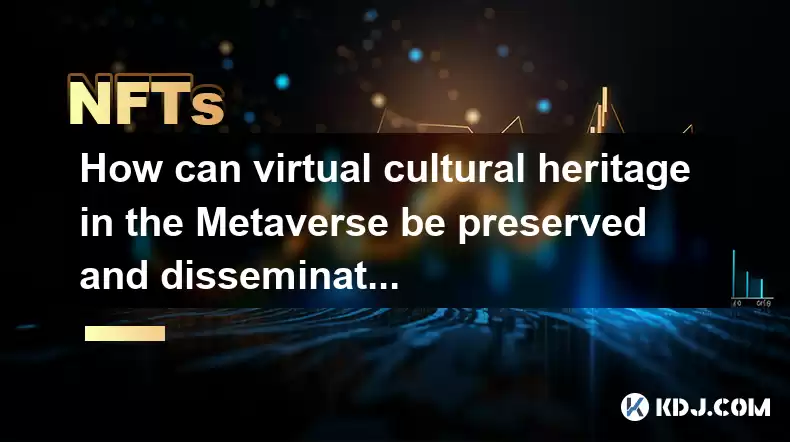
Key Points:
- NFTs offer a unique method for authenticating and verifying ownership of virtual cultural heritage assets within the Metaverse.
- Decentralized storage solutions, like IPFS, enhance the longevity and accessibility of these digital assets, mitigating the risks associated with centralized servers.
- Smart contracts can automate the licensing and distribution of virtual cultural heritage, ensuring creators receive appropriate compensation and control over their work.
- The community aspect of NFTs and the Metaverse allows for collaborative preservation efforts and increased engagement with cultural heritage.
- Challenges remain regarding scalability, interoperability, and the potential for misuse or exploitation of NFTs in this context.
How Can Virtual Cultural Heritage in the Metaverse be Preserved and Disseminated Through NFT?
The Metaverse, with its immersive and interactive environments, presents a compelling opportunity for preserving and disseminating virtual cultural heritage. NFTs, non-fungible tokens, play a crucial role in this process by offering a secure and verifiable method for representing and managing digital assets. This allows for the creation of a new paradigm for cultural preservation, moving beyond traditional, often limited, methods.
One of the primary benefits of using NFTs is the ability to establish clear ownership and provenance. Each NFT acts as a unique digital certificate of authenticity, proving the ownership of a specific digital artifact, be it a 3D model of a historical building, a virtual museum exhibit, or a digital representation of a traditional art form. This combats the issue of digital replication and unauthorized use, a significant problem for digital cultural heritage.
The inherent immutability of blockchain technology further strengthens this authentication. Once an NFT is minted and recorded on the blockchain, its history is permanently documented, making it extremely difficult to forge or alter. This transparency and security are vital for ensuring the integrity and authenticity of virtual cultural heritage assets.
However, simply minting an NFT isn't enough to guarantee long-term preservation. Centralized platforms hosting NFTs are vulnerable to outages, hacking, and censorship. To address this, decentralized storage solutions like IPFS (InterPlanetary File System) are essential. IPFS allows the NFT metadata and the actual digital asset to be stored across a distributed network, making it significantly more resilient and less susceptible to single points of failure.
Smart contracts offer another layer of functionality. These self-executing contracts can automate various aspects of the management and distribution of virtual cultural heritage NFTs. For example, a smart contract could automatically distribute royalties to creators every time an NFT is resold, ensuring fair compensation for their work. It can also control access rights, defining who can view, interact with, or even modify specific aspects of the digital artifact.
The Metaverse's inherent community aspect also plays a significant role. NFTs can facilitate collaborative preservation efforts by allowing multiple individuals or organizations to contribute to the preservation and dissemination of virtual cultural heritage. For example, a community might collectively fund the creation and preservation of a high-fidelity 3D model of a historical site, with each contributor receiving a unique NFT representing their contribution.
Furthermore, the interactive nature of the Metaverse enables greater engagement with cultural heritage. Users can explore virtual museums, interact with digital artifacts, and learn about different cultures and histories in an immersive and engaging way. This level of accessibility can significantly broaden the reach and impact of cultural heritage preservation efforts.
Nevertheless, several challenges remain. Scalability is a major concern; blockchain networks can struggle to handle the volume of transactions required for large-scale preservation projects. Interoperability between different blockchain platforms and Metaverse platforms is another hurdle. A lack of standardization could lead to fragmentation and hinder the widespread adoption of NFTs for cultural heritage preservation.
The potential for misuse and exploitation is also a significant concern. NFTs could be used to create and sell fraudulent or misleading representations of cultural heritage, leading to misinformation and the erosion of trust. Careful consideration of these risks is vital for developing responsible and ethical practices for the use of NFTs in this context. The development of clear guidelines and standards for the creation, management, and use of NFTs for virtual cultural heritage is crucial for ensuring its long-term sustainability.
Frequently Asked Questions:
Q: What are the benefits of using NFTs for preserving virtual cultural heritage compared to traditional methods?
A: NFTs offer verifiable ownership, enhanced security against unauthorized copying, and the potential for automated royalty payments to creators. Traditional methods often lack these features, leading to issues of authenticity and fair compensation.
Q: How can decentralized storage solutions like IPFS improve the longevity of virtual cultural heritage stored as NFTs?
A: IPFS distributes the data across a network, making it less vulnerable to single points of failure like server outages or data breaches, unlike centralized storage solutions.
Q: How do smart contracts contribute to the management and dissemination of virtual cultural heritage NFTs?
A: Smart contracts can automate royalty payments, control access rights to digital assets, and enforce licensing agreements, ensuring creators receive appropriate compensation and maintain control over their work.
Q: What are some of the challenges associated with using NFTs for preserving virtual cultural heritage?
A: Challenges include scalability issues with blockchain technology, interoperability problems between different platforms, and the potential for misuse and the creation of fraudulent NFTs.
Q: How can the community aspect of the Metaverse enhance the preservation and dissemination of virtual cultural heritage through NFTs?
A: Community involvement can foster collaborative preservation efforts, enabling collective funding and contribution to projects. The interactive nature of the Metaverse increases accessibility and engagement with the preserved heritage.
Disclaimer:info@kdj.com
The information provided is not trading advice. kdj.com does not assume any responsibility for any investments made based on the information provided in this article. Cryptocurrencies are highly volatile and it is highly recommended that you invest with caution after thorough research!
If you believe that the content used on this website infringes your copyright, please contact us immediately (info@kdj.com) and we will delete it promptly.
- Cryptocurrency, Altcoins, and Profit Potential: Navigating the Wild West
- 2025-08-04 14:50:11
- Blue Gold & Crypto: Investing Disruption in Precious Metals
- 2025-08-04 14:30:11
- Japan, Metaplanet, and Bitcoin Acquisition: A New Era of Corporate Treasury?
- 2025-08-04 14:30:11
- Coinbase's Buy Rating & Bitcoin's Bold Future: A Canaccord Genuity Perspective
- 2025-08-04 14:50:11
- Coinbase's Buy Rating Maintained by Rosenblatt Securities: A Deep Dive
- 2025-08-04 14:55:11
- Cryptos, Strategic Choices, High Returns: Navigating the Meme Coin Mania
- 2025-08-04 14:55:11
Related knowledge
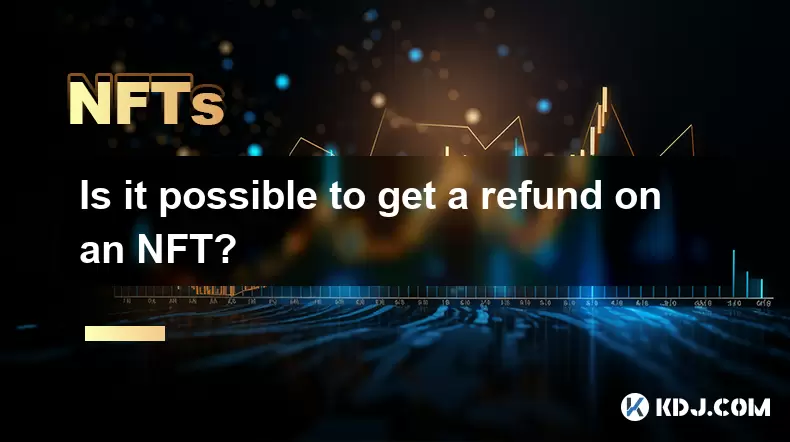
Is it possible to get a refund on an NFT?
Jul 21,2025 at 08:35pm
Understanding NFT Transactions and RefundsWhen you purchase an NFT (Non-Fungible Token), the transaction is typically recorded on a blockchain, making...
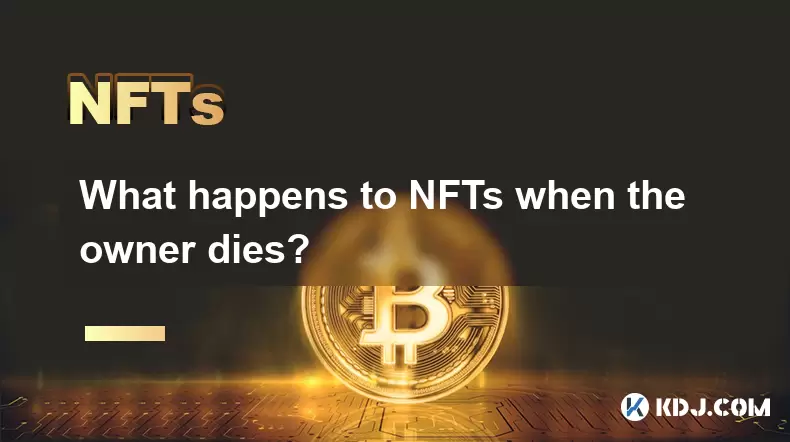
What happens to NFTs when the owner dies?
Jul 22,2025 at 02:43pm
Legal Ownership and Digital AssetsWhen an individual owns NFTs, the question of what happens to these assets upon their death is a pressing one. NFTs ...
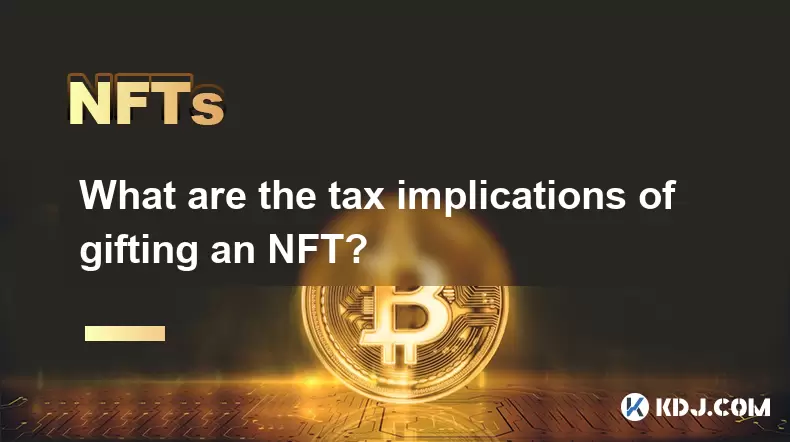
What are the tax implications of gifting an NFT?
Jul 19,2025 at 04:21am
Understanding the Basics of NFT GiftingGifting a Non-Fungible Token (NFT) involves transferring ownership from one individual to another without recei...
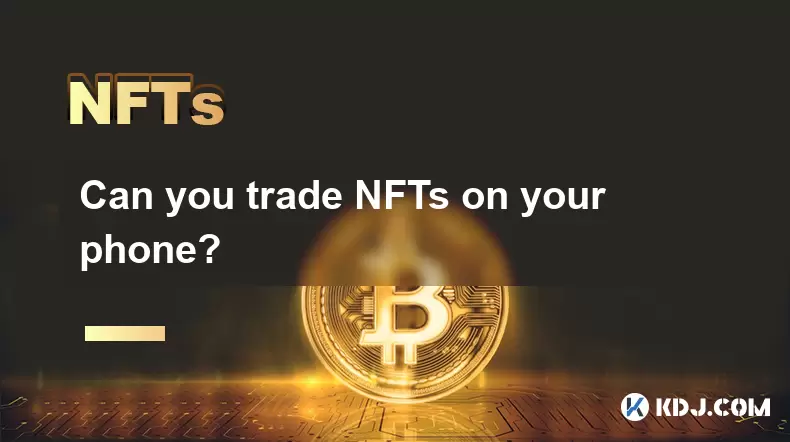
Can you trade NFTs on your phone?
Jul 18,2025 at 04:29am
Trading NFTs on Mobile DevicesYes, you can trade NFTs on your phone, and the process has become increasingly streamlined thanks to a variety of mobile...
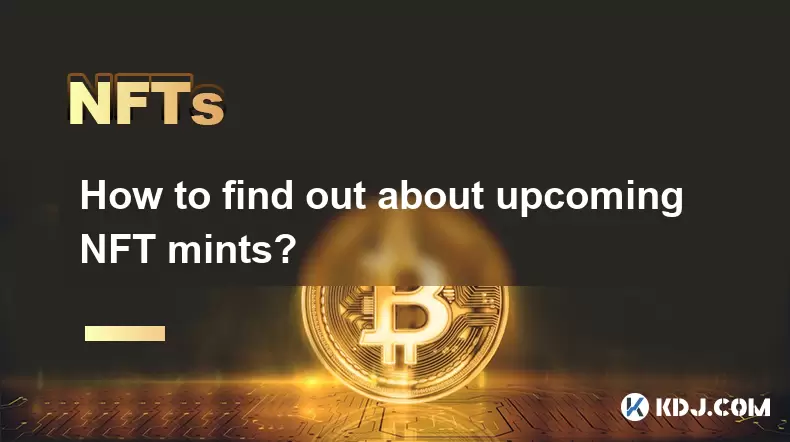
How to find out about upcoming NFT mints?
Jul 18,2025 at 11:50am
Exploring NFT Minting OpportunitiesUnderstanding the landscape of upcoming NFT mints is crucial for collectors, investors, and creators who wish to st...
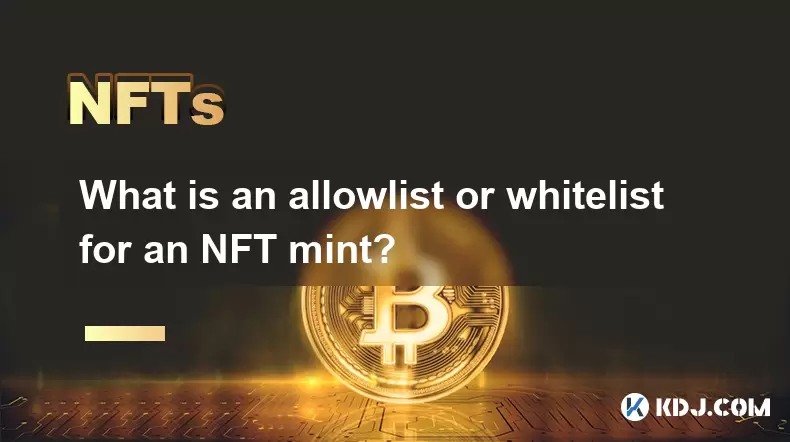
What is an allowlist or whitelist for an NFT mint?
Jul 20,2025 at 07:14pm
Understanding the Concept of an Allowlist for NFT MintingAn allowlist, also commonly referred to as a whitelist, is a mechanism used in the NFT mintin...

Is it possible to get a refund on an NFT?
Jul 21,2025 at 08:35pm
Understanding NFT Transactions and RefundsWhen you purchase an NFT (Non-Fungible Token), the transaction is typically recorded on a blockchain, making...

What happens to NFTs when the owner dies?
Jul 22,2025 at 02:43pm
Legal Ownership and Digital AssetsWhen an individual owns NFTs, the question of what happens to these assets upon their death is a pressing one. NFTs ...

What are the tax implications of gifting an NFT?
Jul 19,2025 at 04:21am
Understanding the Basics of NFT GiftingGifting a Non-Fungible Token (NFT) involves transferring ownership from one individual to another without recei...

Can you trade NFTs on your phone?
Jul 18,2025 at 04:29am
Trading NFTs on Mobile DevicesYes, you can trade NFTs on your phone, and the process has become increasingly streamlined thanks to a variety of mobile...

How to find out about upcoming NFT mints?
Jul 18,2025 at 11:50am
Exploring NFT Minting OpportunitiesUnderstanding the landscape of upcoming NFT mints is crucial for collectors, investors, and creators who wish to st...

What is an allowlist or whitelist for an NFT mint?
Jul 20,2025 at 07:14pm
Understanding the Concept of an Allowlist for NFT MintingAn allowlist, also commonly referred to as a whitelist, is a mechanism used in the NFT mintin...
See all articles

























































































